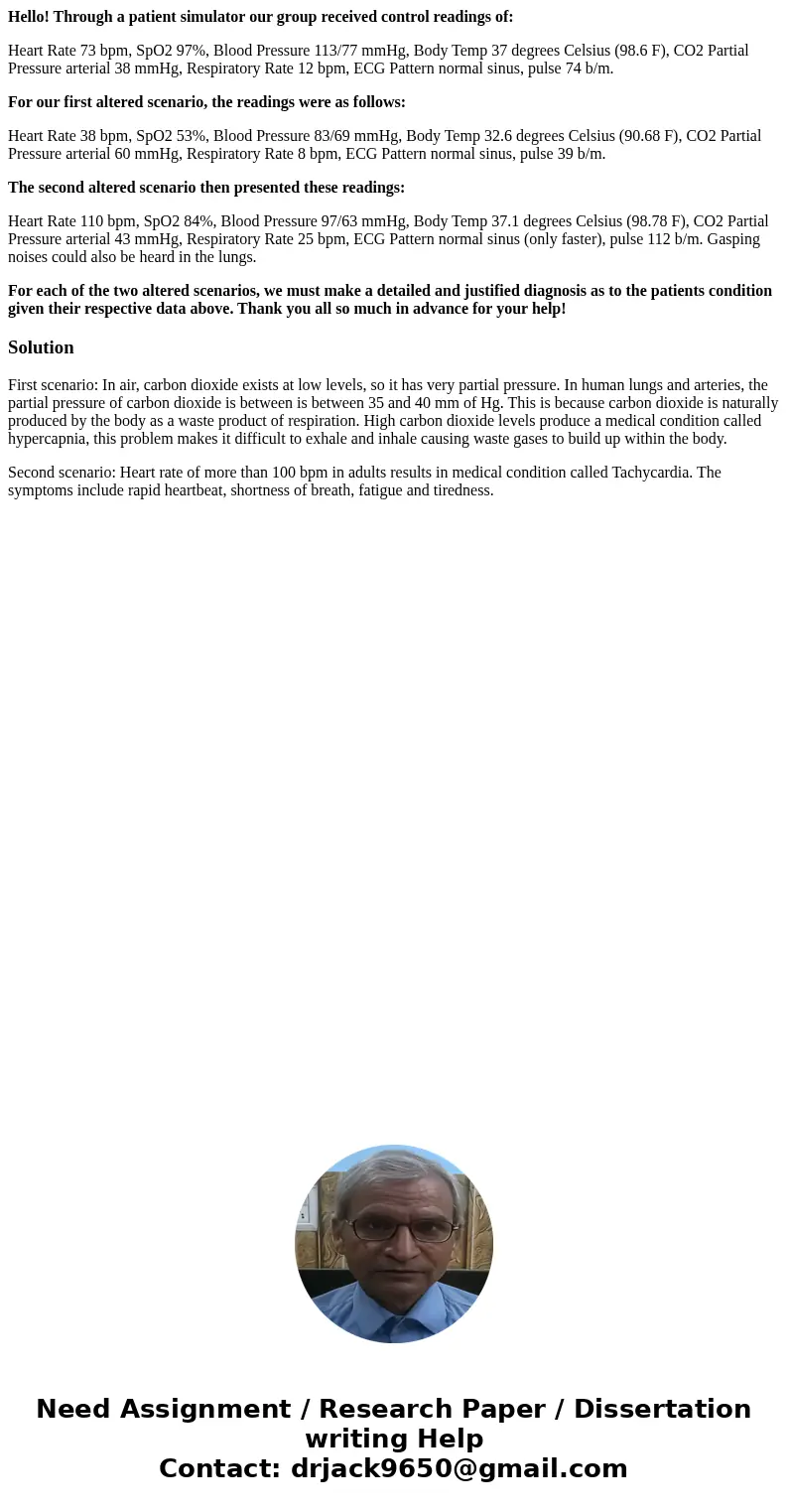Hello Through a patient simulator our group received control
Hello! Through a patient simulator our group received control readings of:
Heart Rate 73 bpm, SpO2 97%, Blood Pressure 113/77 mmHg, Body Temp 37 degrees Celsius (98.6 F), CO2 Partial Pressure arterial 38 mmHg, Respiratory Rate 12 bpm, ECG Pattern normal sinus, pulse 74 b/m.
For our first altered scenario, the readings were as follows:
Heart Rate 38 bpm, SpO2 53%, Blood Pressure 83/69 mmHg, Body Temp 32.6 degrees Celsius (90.68 F), CO2 Partial Pressure arterial 60 mmHg, Respiratory Rate 8 bpm, ECG Pattern normal sinus, pulse 39 b/m.
The second altered scenario then presented these readings:
Heart Rate 110 bpm, SpO2 84%, Blood Pressure 97/63 mmHg, Body Temp 37.1 degrees Celsius (98.78 F), CO2 Partial Pressure arterial 43 mmHg, Respiratory Rate 25 bpm, ECG Pattern normal sinus (only faster), pulse 112 b/m. Gasping noises could also be heard in the lungs.
For each of the two altered scenarios, we must make a detailed and justified diagnosis as to the patients condition given their respective data above. Thank you all so much in advance for your help!
Solution
First scenario: In air, carbon dioxide exists at low levels, so it has very partial pressure. In human lungs and arteries, the partial pressure of carbon dioxide is between is between 35 and 40 mm of Hg. This is because carbon dioxide is naturally produced by the body as a waste product of respiration. High carbon dioxide levels produce a medical condition called hypercapnia, this problem makes it difficult to exhale and inhale causing waste gases to build up within the body.
Second scenario: Heart rate of more than 100 bpm in adults results in medical condition called Tachycardia. The symptoms include rapid heartbeat, shortness of breath, fatigue and tiredness.

 Homework Sourse
Homework Sourse